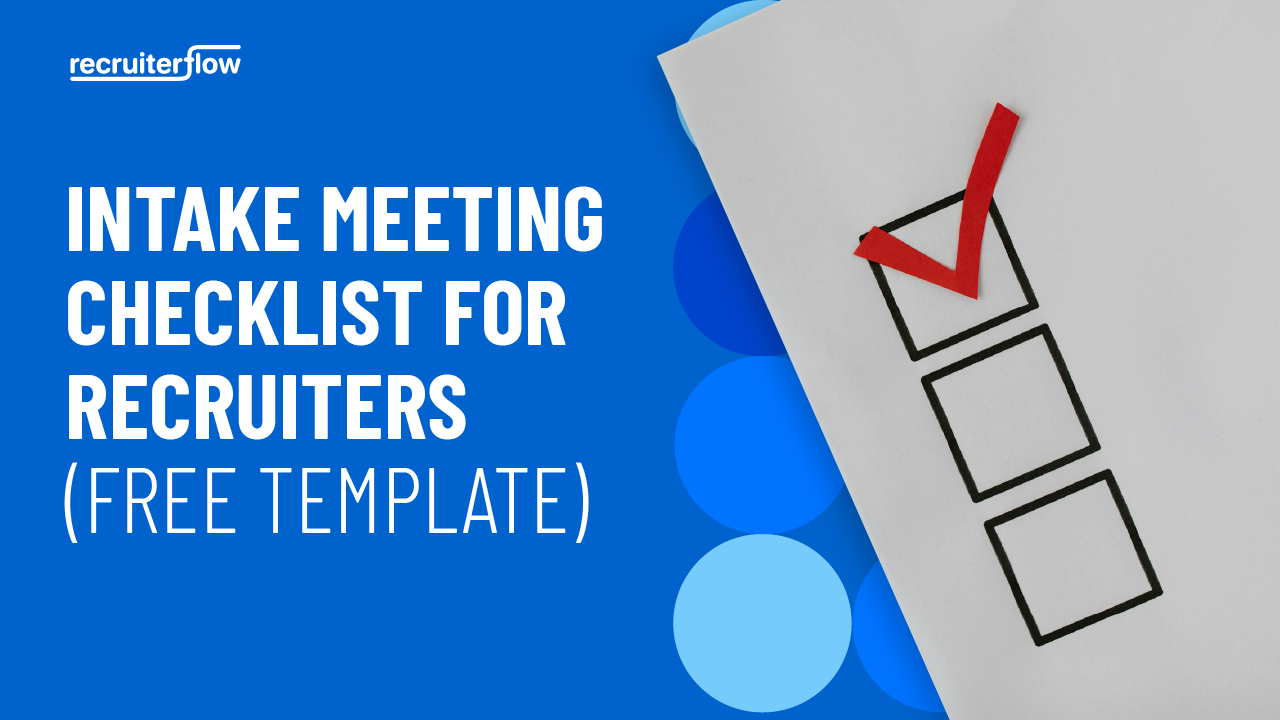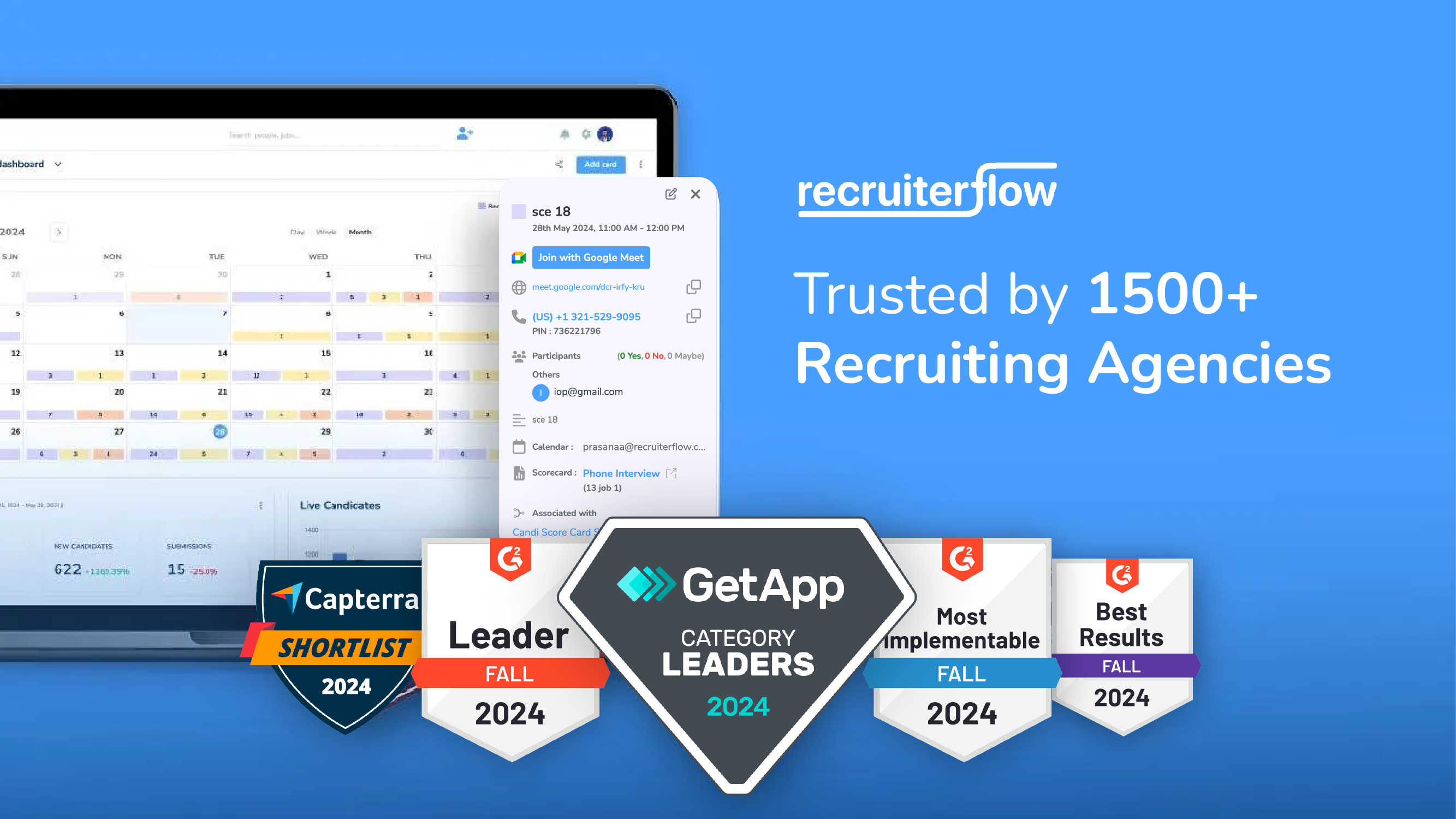
Cost per Hire: Definition, Formula & How to Reduce

How much does each new employee truly cost your organization or your client? The cost per hire (CPH) is a key performance indicator that demands attention for both companies striving for budget efficiency and agencies aiming to deliver maximum value.
In this guide, you’ll learn exactly what cost per hire means, how to calculate it using the industry-standard formula, and most importantly, how to lower it without compromising on talent quality. Whether you’re an HR leader or a hiring manager, these practical tips and insights will help you optimize your recruitment budget and improve your hiring ROI.
What is Cost per Hire (CPH)?
Cost per hire is a crucial recruiting metric that helps companies understand how much money they spend on average to bring a new employee on board.
It’s not just about the salary you eventually pay the new hire, but all the expenses involved in sourcing, attracting, and recruiting them.
Cost per Hire (CPH) measures the average cost incurred by a company to hire one employee.
Tracking CPH helps you understand the financial impact of your recruitment efforts, improve your recruiting process, budget for future initiatives, and compare different recruiting methods.
The basic formula for calculating cost per hire is pretty straightforward:
Cost Per Hire = Total Recruiting Costs / Number of Hires
To get the most accurate picture, you must dig into your internal and external costs.
Internal Costs
These are the costs associated with your internal recruitment team and resources:
- Recruiter Salaries: Don’t forget to include benefits and bonuses.
- Recruitment Training: Costs for training your recruitment team.
- Interview Time: The time spent by your employees conducting interviews.
- Internal Systems: Costs associated with applicant tracking systems (ATS) and other software.
- Employee Referral Programs: Bonuses or incentives paid to employees for successful referrals.
- Overhead Costs: General office expenses, compliance, and other administrative costs.
External Costs
These are the expenses you pay to external vendors and services:
- Job Advertising: Fees for posting jobs on job boards and other platforms.
- Recruitment Software/ATS Fees: Subscription costs for recruitment software.
- Agency Fees: Payments to external recruiters or agencies.
- Background Checks: Costs for background checks and screening.
- Relocation Expenses: Expenses paid to relocate a new hire.
- Job Fairs: Costs associated with organizing or attending job fairs, including booth rentals and travel expenses.
- Technology Costs: Costs for any technology used in the recruitment process.
- Drug Testing: Charges for drug testing potential employees
Also read: Recruitment Analytics: A Complete Guide
Why Cost Per Hire Matters?
Understanding your cost per hire can lead to smarter decisions and a better bottom line.
1. Helps Optimize Recruitment Budgets
Knowing your cost per hire allows companies to allocate their recruitment budgets more effectively.
Tracking all expenses involved in hiring–from advertising and recruiter salaries to candidate travel and onboarding costs–helps you gain a clear picture of where your money goes.
With this insight, companies can forecast future hiring costs and avoid overspending.
Also, check out our blog on Recruitment Budget to learn how to optimize your recruitment spending for better results.
2. Drives Recruitment Efficiency
Cost per hire is a key indicator of how efficient a company’s recruitment process is. If the cost is rising without a corresponding increase in quality or speed of hiring, it signals inefficiencies that need addressing.
For instance, tech companies often face higher costs, up to $35,000 for software developers, due to fierce competition for talent and specialized skills.
By analyzing cost per hire alongside other recruiting metrics like time to fill, recruiters can streamline processes, reduce bottlenecks, and improve candidate quality while controlling costs.
You can also read our complete guide on recruiting metrics you must track.
3. Enables Strategic Decision-Making
Cost per hire provides data-driven insights that help HR leaders and executives make informed decisions about where to invest in talent acquisition. When hiring for critical or senior roles, higher costs may be justified by the impact of the hire on business success.
For example, executive hires can cost upwards of $28,000. This reflects the complexity and importance of these positions. Understanding these nuances allows organizations to balance cost with strategic value and ensure recruitment efforts align with broader business goals.
4. Benchmarks Performance and Accountability
Tracking cost per hire over time and comparing it against industry benchmarks helps organizations gauge their recruitment effectiveness. The median cost per hire in the U.S. is about $1,633, but this varies by company size and sector.
Smaller companies often face higher per-hire costs due to fewer resources, while larger firms benefit from economies of scale.
Regularly reviewing CPH fosters accountability within recruitment teams and supports transparent reporting to stakeholders, justifying recruitment investments with clear ROI.
5. Highlights the Importance of Retention
High cost per hire underscores the value of employee retention. The total cost to hire a new employee can be 3 to 4 times the position’s salary.
For example, in manufacturing, hiring for a $60,000 role might cost $180,000 when all expenses are considered. Reducing turnover not only saves these costs but also improves organizational stability and productivity.
Companies like Ericsson have successfully cut their cost per hire by 70% through social media and employee advocacy initiatives, which also boosted retention rates.
How to Calculate Cost Per Hire (with Formula)
The Formula for Cost Per Hire
The formula to calculate cost per hire is:
Cost Per Hire = Internal Recruiting Costs + External Recruiting Costs / Total Number of Hires
Where:
Internal Recruiting Costs: Expenses related to your in-house recruitment team, such as salaries, benefits, recruitment software, employee referral bonuses, and interview costs.
External Recruiting Costs: Expenses paid to outside vendors or services, including recruitment agency fees, job advertising, background checks, candidate travel expenses, and relocation costs.
Total Number of Hires: The number of employees successfully hired during the chosen time frame.
Step-by-Step Guide to Calculate Cost Per Hire
Step 1: Define Your Measurement Period
Decide the time frame for which you want to calculate the cost per hire. It could be monthly, quarterly, or annually. Consistency in this period is important for meaningful comparisons over time.
Step 2: Gather Internal Recruiting Costs
Collect all expenses related to your internal recruitment efforts. This typically includes:
- Salaries and benefits of your recruitment and HR team members
- Costs of recruitment software and technology
- Employee referral bonuses
- Interview expenses (travel, accommodation, assessment tools)
- Training and development costs for recruiters
- Office space and equipment allocated to recruitment
Step 3: Collect External Recruiting Costs
Add up all costs paid to external sources, such as:
- Recruitment agency or headhunter fees
- Job board and advertising fees (online ads, social media promotions)
- Background checks and pre-employment assessments
- Candidate travel and relocation expenses
- Marketing costs related to employer branding
Step 4: Determine the Total Number of Hires
Count the number of employees hired during your selected period. Make sure to include only those who were fully onboarded and exclude temporary or contract workers unless relevant to your analysis.
Step 5: Plug the Numbers into the Formula
Add your total internal and external recruiting costs, then divide by the total number of hires.
Example:
- Internal costs = $50,000
- External costs = $30,000
- Total hires = 20
Cost Per Hire = 50,000 + 30,000 / 20 = 80,000 / 20 = 4,000
This means your average cost per hire is $4,000
Average Cost Per Hire: What’s the Benchmark in 2025?
According to the Society for Human Resource Management (SHRM), the average cost per hire in the United States hovers around $4,700 in 2025. This figure aligns with multiple sources and represents an industry-standard benchmark.
However, it is important to note that this average can vary widely depending on factors such as company size, industry, role seniority, and geographic location. For instance:
- Executive-level hires can cost significantly more, with estimates reaching upwards of $28,000 per hire due to the complexity and length of the recruitment process.
- Small to medium-sized businesses might experience higher training costs per employee, sometimes exceeding $1,000 annually, which adds to the overall cost per hire.
- The median cost per hire in the U.S. is approximately $1,633, indicating that some roles require much less investment, while others demand considerably more.
Industry-Specific Benchmarks
Cost per hire varies notably by industry, reflecting differences in talent availability, role complexity, and recruitment methods. Here’s a snapshot of average costs by sector:
| Industry | Average Cost per Hire (2025) |
| Accommodation, Food Service, Arts, Recreation | ~$1,070 |
| Manufacturing | ~$3,497 |
| Public Administration, Education | ~$4,160 |
| Construction, Utilities, Agriculture, Mining | ~$4,173 |
| Healthcare and Social Services | ~$4,770 |
| Administrative Support | ~$6,338 |
| Professional, Scientific, Technical Services | ~$6,200 |
| Nonprofit, Privately Owned | ~$4,151 |
These figures illustrate that sectors requiring highly specialized skills or extensive vetting (e.g., professional services, healthcare) tend to have higher recruitment costs.
Factors Influencing Cost Per Hire
Several elements impact the cost per hire, including:
- Role Complexity and Seniority: More specialized or senior roles require longer sourcing and vetting, increasing costs.
- Recruitment Channels: Using agencies or premium job boards adds to expenses compared to internal referrals or social media recruiting.
- Onboarding and Training: Effective onboarding programs, while essential, add to the overall cost, especially if training is intensive.
- Geographic Location: Hiring in high-cost living areas typically involves higher salaries and recruitment costs.
- Turnover Rates: High turnover inflates cost per hire since recruitment must happen more frequently
How to Reduce Cost Per Hire: Actionable Strategies in 2025
Implementing these targeted strategies can significantly lower recruitment expenses without compromising the quality of hires.
Optimize the Hiring Process
This is one of the fastest ways to reduce cost-per-hire (CPH). From improving job descriptions to implementing automation and structured screening, small changes to your workflows can significantly reduce time-to-hire and improve candidate quality.
- Streamline Workflows: Identify bottlenecks and inefficiencies in your current recruiting process. Standardize steps where possible.
- Refine Job Descriptions: Create clear, concise, and accurate job descriptions optimized with relevant keywords to attract suitable candidates and deter unqualified ones. Shorter job descriptions (under 150 words) can attract more applicants.
- Use Video Interviews: Incorporating video interviews, especially for initial screening, can reduce the cost per hire by around 20% and save time and travel costs.
- Improve Candidate Screening: Implement thorough screening processes early on to filter out unfit candidates quickly. Use structured interviews for consistent evaluation.
- Reduce Time-to-Hire: A faster process generally means lower costs. Automating scheduling and communication can help. Understanding and minimizing the time investment per hire is crucial.
Leverage Internal Resources
Your current team can be your most powerful and cost-effective hiring channel. Prioritizing referrals and maintaining a warm pipeline of past applicants reduces sourcing time and external spend while boosting retention and engagement.
- Boost Employee Referrals: Employee referral programs are highly cost-effective, often yielding high-quality candidates who stay longer. Studies show referrals shorten the hiring process and cost less. Offering incentives like cash bonuses can increase participation. Referred candidates account for a significant percentage of hires despite being a smaller portion of applicants.
- Prioritize Internal Mobility & Succession Planning: Hiring from within saves significant costs associated with external recruitment (advertising, agency fees) and often leads to faster integration. Proactive succession planning prepares internal candidates for future openings. Internal mobility can improve retention rates significantly.
- Build and Maintain Talent Pipelines/Communities: Create a database of qualified past applicants and potential candidates who have expressed interest. Tapping into this pre-vetted pool can drastically reduce sourcing time and advertising costs when vacancies arise.
Enhance Employer Branding & Sourcing
A strong employer brand attracts candidates organically and cuts down on reliance on expensive recruitment ads. Pair that with a strategic use of social media and a well-designed career portal to significantly lower your CPH.
- Strengthen Employer Brand: A positive employer reputation attracts candidates organically and reduces reliance on paid advertising and potentially lowering salary expectations. Companies with strong brands receive more applicants and have lower CPH (up to 43% lower according to one LinkedIn study). Candidates are more receptive to outreach from companies with good reputations.
- Utilize Free and Low-Cost Job Boards: Leverage free tiers on major job boards like LinkedIn, Indeed, and Glassdoor. Optimize posts with keywords for visibility. Even premium sponsored posts on online boards are generally cheaper than traditional advertising. Nokia, for example, reduced its CPH by 74% by switching to Indeed as its primary platform.
- Leverage Social Media: Social recruiting is a cost-effective channel, with many managers successfully hiring via platforms like LinkedIn. Encourage employees to share job posts.
- Develop a Branded Career Portal: A dedicated career site acts as a 24/7 advertisement for your brand and jobs and attracts more direct applicants (up to 8x more). It allows you to showcase company culture, values, and benefits effectively.
Focus on Retention & Quality of Hire
Hiring is only half the equation—keeping the right people matters just as much. Investing in onboarding and ensuring a strong culture fit helps avoid the high cost of turnover and the hidden expenses of bad hires.
- Improve Company Culture: A positive work environment is crucial for retention. High turnover significantly inflates CPH because positions need constant refilling. Address cultural issues identified through employee feedback.
- Enhance Onboarding: Strong onboarding processes improve new hire retention by up to 82% and productivity by over 70%. Poor onboarding leads to frustration and early departures.
- Hire the Right Fit: Avoid the significant costs associated with bad hires (estimated at nearly $17,000 per instance) by implementing thorough background checks, ensuring culture fit, and conducting in-depth interviews.
- Monitor Retention Rates: Track retention, especially for new hires. Low retention in specific roles might indicate issues with the hiring process or the role itself and require investigation to prevent re-hiring costs.
Embrace Technology & Automation
Modern hiring tools—like ATS, AI-powered screeners, and skills-based platforms—can dramatically improve efficiency. Automating repetitive tasks frees up recruiter time, while intelligent systems can enhance accuracy and reduce costs across the recruiting funnel.
- Implement Applicant Tracking Systems (ATS): ATS streamlines application management, reduces administrative work, and helps manage candidate data effectively.
- Use AI and Automation: AI tools can automate repetitive tasks like resume screening, initial candidate communication (chatbots), and interview scheduling. Automation significantly reduces the time between interview scheduling and the actual interview. AI can also provide predictive analytics for hiring needs. Zoom successfully used AI scheduling software to manage a massive increase in interview volume.
- Skills-Based Hiring Platforms: These platforms use assessments to verify competencies, often providing pre-screened candidate pools and reducing screening time and costs. Some operate on pay-per-hire models and offer better ROI than traditional job boards. Companies using skills-based hiring have reported significant cost reductions (e.g., $2,000 per hire in one case study, 74% lower costs overall).
Optimize Hiring Insights
Data is your best ally in making smart hiring decisions. Tracking key recruitment metrics and analyzing the effectiveness of your sourcing channels lets you identify cost drains and optimize spend to focus only on what works.
- Track Key Metrics: Consistently track cost per hire, time-to-hire, source-of-hire, quality-of-hire, and retention rates. Recruitment software often includes reporting dashboards for easy tracking.
- Analyze Recruitment Channel Effectiveness: Use source-of-hire data to identify which channels deliver the best ROI (quality candidates at lower cost) and focus budget accordingly. Stop spending on underperforming channels.
- Benchmark Costs: Compare your CPH against industry averages to identify potential overspending.
Control Recruitment Costs
Staying on top of contracts and focusing on candidate quality over volume helps control expenses. Regular vendor reviews and shorter job postings can yield significant savings without compromising hiring outcomes.
- Negotiate Vendor Contracts: Regularly review and negotiate contracts with recruitment agencies, job boards, and technology providers to secure better rates or terms.
- Prioritize Quality over Quantity: Focusing on attracting a smaller pool of highly qualified candidates can be less expensive than processing a large volume of applications. Shorten advertising periods if sufficient quality candidates are received early.
Also read: AI Recruiting in 2025: The Complete Guide.
FAQs
How to Calculate Cost per Hire in Excel?
In Excel, calculate Cost Per Hire by dividing your total recruiting costs by the number of hires within a specific period. Use the formula =SUM(Total Recruiting Costs Cell(s))/Number of Hires Cell. First, list all recruiting expenses (advertising, salaries, fees, travel, etc.) and sum them up. Then, divide this total by the number of people hired in the same timeframe. The result is your Cost Per Hire.
Why is My Cost per Hire High?
High Cost Per Hire can result from:
- Inefficient processes: Long hiring times and unnecessary steps.
- Expensive channels: Over-reliance on agencies or premium job boards.
- High turnover: Frequent need to refill positions.
- Poor sourcing: Not reaching the right candidates effectively.
- Weak employer brand: Difficulty attracting candidates.
- Ineffective interviews: Lengthy or poorly structured processes.
- Lack of negotiation: Not optimizing salary and benefit costs.
- Poor technology use: Absence of ATS or other efficiency tools.
What Can a Company Implement during the Recruiting Process to Reduce Hiring Time and Cost per Hire?
Companies can:
- Simplify applications: Make them user-friendly and quick.
- Strengthen employer branding: Attract more qualified candidates.
- Optimize job descriptions: Target the right talent.
- Use an ATS: Automate tasks and improve management.
- Encourage referrals: Leverage cost-effective, quality sources.
- Build talent pipelines: Prepare for future needs.
- Consider RPO: Explore potential cost and time savings.
What is Considered a Good Cost per Hire?
There’s no universal “good” Cost Per Hire. It varies by industry, job level, location, company size, and economic conditions. Instead of a benchmark, focus on:
- Tracking your cost over time: Identify trends and measure improvement.
- Comparing to industry averages: Get a general sense of your standing.
- Considering the value of the hire: A higher cost for a top performer can be worthwhile.
What are Some Indirect Costs that Factor Into the Overall Expense of Hiring?
Beyond direct expenses, indirect hiring costs include:
- Hiring manager time: Spent on reviewing and interviewing.
- HR time (non-recruiting): For onboarding and setup.
- Lost productivity: Due to vacant roles.
- Training costs: For new employee development.
- Technology costs: For HR and payroll systems.
- Opportunity cost: Missed potential due to delays.
- Impact on morale: From vacancies or poor experiences.
How Can Technology Help Reduce Cost per Hire?
Technology significantly lowers the Cost Per Hire by:
- Automating recruitment workflows with Applicant Tracking Systems (ATS)
- Efficiently identifying and engaging passive candidates using AI-powered sourcing tools
- Cutting down on travel expenses and time through Video interviewing platforms
- Improving early-stage candidate filtering with online Assessment tools
- Enhancing teamwork and speed using Communication and collaboration platforms
- Attracting more direct applicants via Employer branding platforms
Also read: 360 Recruitment: A Complete Guide for 2025
Implement Data-driven Recruiting Strategies with Recruiterflow

With a powerful reporting and analytics suite, Recruiterflow helps you turn recruitment data into actionable insights:
- Track team performance
- Monitor key recruiting metrics
- Create custom reports tailored to your needs
Need more customization? Recruiterflow’s BI and Advanced Reporting features let you build custom reports that fit your recruiting strategy:
- Track time-to-fill
- Measure the effectiveness of different sourcing channels
- Analyze applicant-to-interview ratios
- And more metrics
Plus, your agency gets everything to manage your recruitment operations:
- Unified ATS & CRM
- AI-first screening and sourcing tools
- AI recruiting assistant
- Centralized candidate database
- Automated, multi-channel outreach (Email, SMS, Call & Socials)
- No-code recruiting automation
- Data enrichment capabilities
- Advanced reporting and analytics
- Open APIs and a host of integrations
Hudson B., CEO & Founder, reviewed us on G2Crowd:
“We’ve been using RecruiterFlow for the past two years and it has streamlined our recruiting process. The platform has a user-friendly interface and automation tools that help us efficiently manage candidate pipelines, reduce manual tasks, and communicate with clients. It serves as the command center for our recruiting operation, allowing us to focus on building relationships. They have exceptional customer success, are quick to assist, eager to hear feedback, and committed to product development. I recommend it to any small agency looking to optimize its workflows.”
See it in action now: Book a free demo.
Recruitment






Pragadeesh Natarajan